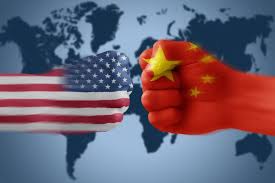
President Donald Trump has intensified the U.S.–China trade conflict with a sweeping escalation of tariffs and export controls that signal a renewed and more aggressive phase of confrontation. Beneath the headline moves lies a nuanced strategy intended to recalibrate economic leverage, penalize Chinese supply-chain dominance, and reshape the rules of engagement in high-tech competition.
At the core of the escalation is Trump’s announcement of “100 percent tariffs” on “Chinese exports to the U.S.”, coupled with planned restrictions on the export of critical software and technology products. The new measures are timed to begin just days before existing tariff reprieves would expire, reflecting a deliberate push to reset pressure on Beijing rather than allow the previous détente to continue.
The Rationale Behind the Tariff Surge
Trump and his advisers view China’s tightening export controls—especially over rare-earth minerals and electronic components—as more than economic policy; they regard them as deliberate tools of strategic coercion. By constraining access to these essential inputs, Beijing threatened sectors where U.S. firms are globally competitive. From Washington’s perspective, the only credible response to such moves is to limit China’s access to American high-tech infrastructure.
This escalation also reflects political calculation. Heading into a tense global environment, the White House sought to project firmness. By tightening tariffs and technology controls simultaneously, Trump aimed to signal that U.S. dominance in semiconductor systems, cloud platforms, and software architecture would not cede ground to resource-driven leverage.
Moreover, the administration appears eager to set the terms ahead of any summit with Chinese President Xi Jinping. By making the move publicly and forcefully, the U.S. intends to negotiate from a position of asserted strength rather than deference.
Unpacking the Tactical Escalation
The announced “100% tariff hike” effectively doubles levies on a broad swath of Chinese goods, from electronics and machinery to consumer products. But the tariffs are only part of the escalation. The White House is also preparing “export licensing restrictions” on advanced software, artificial intelligence tools, cloud systems, and other digital infrastructure exports to China.
In addition, Trump threatened broader export curbs on aerospace components and industrial systems—domains where Chinese firms have sought to compete aggressively. While the details remain under internal development, the dual approach—blocking inbound trade and outbound technology—demonstrates a structural shift in U.S. trade policy toward containment.
Some officials see the software curbs as especially strategic: by constraining China’s access to cutting-edge code, they hinder its ability to replicate or leapfrog in critical sectors. In effect, the U.S. is asserting that resource choke points (e.g. rare-earth elements) may be matched by choke points in digital infrastructure.
Timing, Optics, and Market Fallout
The timing of Trump’s escalation was not accidental. Coming just before expiration of tariff relief, it forces a sharp reset rather than a gradual drift. The move also isolates Beijing’s moral standing: China is unlikely to appear conciliatory after deploying restrictive export loops.
The announcement roiled financial markets. U.S. stock indices dropped sharply, tech shares took heavy losses, and investors sought safer assets. The scale of the tariffs—and the added uncertainty around tech export rules—rattled confidence in global supply chains already under strain.
Analysts warn that by pairing tariffs with software controls, Trump has widened the scope of conflict from trade into technology sovereignty. Chinese importers reliant on U.S. software or cloud platforms could face disruptions, while U.S. firms that integrate with global Chinese production could see supply bottlenecks.
Strategic Risks and High-Stakes Gamble
While the escalation is bold, it is laden with risk. Tariffs of this scale will inflate consumer prices, strain industrial supply chains, and deepen global inflationary pressures. The software export curbs might provoke retaliation—possibly technology decoupling or financial countermeasures.
The administration appears aware of the risk: they rely on the United States’ broader economic strength and presumed resilience to absorb the blow. Still, if China retaliates with its own counter-controls or strikes at critical supply chains, the confrontation could spiral beyond containment.
Domestically, prolonged escalation may test political support. Higher costs for goods and capital investments could provoke pushback from industry groups and consumer advocates. The White House must balance assertiveness with visible economic stability.
What Trump Hopes to Achieve
Trump’s ultimate ambition is to force concessions. By ratcheting pressure, the administration aims to extract writing or enforcement guarantees from Beijing—on supply-chain reciprocity, technology access, intellectual property, and market opening. The tariff and export control machinery is a lever to push China back onto U.S.-favorable terms.
The strategy also seeks psychological impact: to signal to both allies and rivals that U.S. trade dominance is nonnegotiable, especially in high-tech sectors. In that sense, Trump has transformed the trade war into a broader contest of economic sovereignty and geopolitical order.
The escalation may push the U.S.–China conflict into a sustained standoff. If Beijing responds with retaliatory countermeasures—bans, restrictions, national security claims—it could trigger a cascade of trade fragmentation across regions.
Other countries may be forced to choose alignments: whether to align with U.S. tech-led blocks or seek independence from decoupled value chains. The shift also accelerates a bifurcation in global trade architecture—U.S-led digital infrastructure systems vs. China-driven resource networks.
At stake is more than immediate balance sheets: it’s how the global economic order organizes in the 21st century.
(Source:www.japantimes.co.jp)
At the core of the escalation is Trump’s announcement of “100 percent tariffs” on “Chinese exports to the U.S.”, coupled with planned restrictions on the export of critical software and technology products. The new measures are timed to begin just days before existing tariff reprieves would expire, reflecting a deliberate push to reset pressure on Beijing rather than allow the previous détente to continue.
The Rationale Behind the Tariff Surge
Trump and his advisers view China’s tightening export controls—especially over rare-earth minerals and electronic components—as more than economic policy; they regard them as deliberate tools of strategic coercion. By constraining access to these essential inputs, Beijing threatened sectors where U.S. firms are globally competitive. From Washington’s perspective, the only credible response to such moves is to limit China’s access to American high-tech infrastructure.
This escalation also reflects political calculation. Heading into a tense global environment, the White House sought to project firmness. By tightening tariffs and technology controls simultaneously, Trump aimed to signal that U.S. dominance in semiconductor systems, cloud platforms, and software architecture would not cede ground to resource-driven leverage.
Moreover, the administration appears eager to set the terms ahead of any summit with Chinese President Xi Jinping. By making the move publicly and forcefully, the U.S. intends to negotiate from a position of asserted strength rather than deference.
Unpacking the Tactical Escalation
The announced “100% tariff hike” effectively doubles levies on a broad swath of Chinese goods, from electronics and machinery to consumer products. But the tariffs are only part of the escalation. The White House is also preparing “export licensing restrictions” on advanced software, artificial intelligence tools, cloud systems, and other digital infrastructure exports to China.
In addition, Trump threatened broader export curbs on aerospace components and industrial systems—domains where Chinese firms have sought to compete aggressively. While the details remain under internal development, the dual approach—blocking inbound trade and outbound technology—demonstrates a structural shift in U.S. trade policy toward containment.
Some officials see the software curbs as especially strategic: by constraining China’s access to cutting-edge code, they hinder its ability to replicate or leapfrog in critical sectors. In effect, the U.S. is asserting that resource choke points (e.g. rare-earth elements) may be matched by choke points in digital infrastructure.
Timing, Optics, and Market Fallout
The timing of Trump’s escalation was not accidental. Coming just before expiration of tariff relief, it forces a sharp reset rather than a gradual drift. The move also isolates Beijing’s moral standing: China is unlikely to appear conciliatory after deploying restrictive export loops.
The announcement roiled financial markets. U.S. stock indices dropped sharply, tech shares took heavy losses, and investors sought safer assets. The scale of the tariffs—and the added uncertainty around tech export rules—rattled confidence in global supply chains already under strain.
Analysts warn that by pairing tariffs with software controls, Trump has widened the scope of conflict from trade into technology sovereignty. Chinese importers reliant on U.S. software or cloud platforms could face disruptions, while U.S. firms that integrate with global Chinese production could see supply bottlenecks.
Strategic Risks and High-Stakes Gamble
While the escalation is bold, it is laden with risk. Tariffs of this scale will inflate consumer prices, strain industrial supply chains, and deepen global inflationary pressures. The software export curbs might provoke retaliation—possibly technology decoupling or financial countermeasures.
The administration appears aware of the risk: they rely on the United States’ broader economic strength and presumed resilience to absorb the blow. Still, if China retaliates with its own counter-controls or strikes at critical supply chains, the confrontation could spiral beyond containment.
Domestically, prolonged escalation may test political support. Higher costs for goods and capital investments could provoke pushback from industry groups and consumer advocates. The White House must balance assertiveness with visible economic stability.
What Trump Hopes to Achieve
Trump’s ultimate ambition is to force concessions. By ratcheting pressure, the administration aims to extract writing or enforcement guarantees from Beijing—on supply-chain reciprocity, technology access, intellectual property, and market opening. The tariff and export control machinery is a lever to push China back onto U.S.-favorable terms.
The strategy also seeks psychological impact: to signal to both allies and rivals that U.S. trade dominance is nonnegotiable, especially in high-tech sectors. In that sense, Trump has transformed the trade war into a broader contest of economic sovereignty and geopolitical order.
The escalation may push the U.S.–China conflict into a sustained standoff. If Beijing responds with retaliatory countermeasures—bans, restrictions, national security claims—it could trigger a cascade of trade fragmentation across regions.
Other countries may be forced to choose alignments: whether to align with U.S. tech-led blocks or seek independence from decoupled value chains. The shift also accelerates a bifurcation in global trade architecture—U.S-led digital infrastructure systems vs. China-driven resource networks.
At stake is more than immediate balance sheets: it’s how the global economic order organizes in the 21st century.
(Source:www.japantimes.co.jp)





